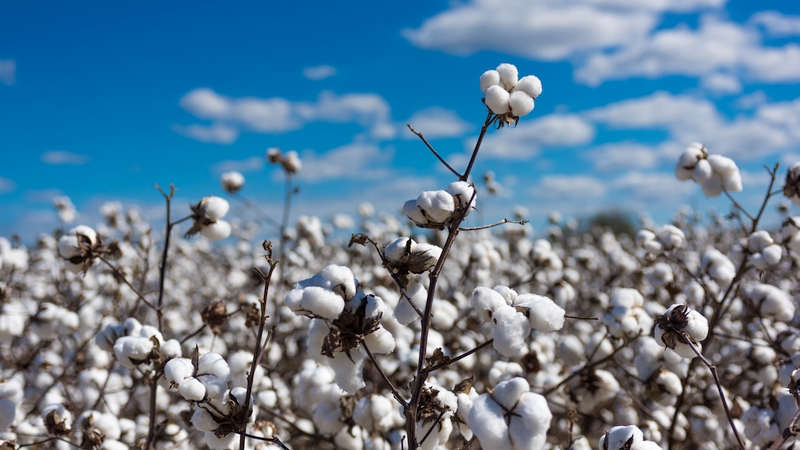Improving Irrigation Efficiency to Boost the Bottom Line
This is one of seven articles focusing on irrigation technology from Meister Media Worldwide’s Irrigation Technology Annual Report, now available online.
With cotton prices at near historic levels and a highly productive 2021 season in the rear-view mirror, it’s no surprise that cotton growers from coast to coast will likely add additional acres in 2022, all while looking for ways to increase production efficiency and manage their costs.
In many parts of the Cotton Belt, growers rely on irrigation to provide timely moisture to their crops. And although many systems now feature remote management systems, it’s still not uncommon for growers to rely on visual inspection and experience to decide when to water.
Dr. Jose Payero wants to make those decisions easier and more profitable for growers.
Payero – Assistant Professor and Irrigation Specialist at Clemson University’s Edisto Research and Education Center – is currently managing multiple research projects aimed at developing intelligent irrigation systems for water management, nutrient application, and environmental and economic benefits for growers.
“South Carolina is located in a wet environment, receiving between 40 and 80 inches of rain per year,” explained Payero in a YouTube presentation about his work. “But irrigation is still needed to get high crop yields due to non-uniform rainfall distribution during the crop growing season, as well as shallow, sandy soils with low water-holding capacities.
“These factors often combine to create periods of crop water stress during the growing season, and farmers have adopted irrigation as a way of preventing these periods of stress,” he added. “Water is normally pumped on surface ground water sources at a fixed cost of roughly $125 per acre. This is an economic incentive for farmers to apply irrigation only when needed and in the amount needed to grow the crop. However, most farmers in the state irrigate based on the condition of the crop, which leads to water waste.”
According to Clemson University reports, the heart of the research is the Clemson Water Management System developed by Payero based on new, affordable soil moisture sensors using low cost open-source components and wireless cell phone communication.
In 2020, the first year of the study, sensors were placed with cooperating growers in on-farm trials in six locations with different soil types. All fields were irrigated with center pivot systems and planted to either cotton, peanuts, or soybeans. The growers were trained to irrigate the sensor fields using an app on their cell phones to monitor the collected soil moisture data.
Sensors were installed at 6, 12, 18, and 24 inches, and data was collected hourly and transmitted to a cloud server using a cellular network.
“Based on the agronomic and economic data collected, we found the increased net income ranged from $87.30/acre to $641.19/acre,” Payero said. “The average increased net income for all six farms was $202.28/acre – a 19.42% increase.
The study continued in 2021 on six additional farms, with plans to add six others in 2022 to see if the results hold.
“There is a need to promote adoption of this technology by training local farmers by demonstrating and quantifying its environmental and economic benefits,” pointed out Payero. “This easy-to-use, affordable soil moisture monitoring system will help growers enhance water-use efficiency and increase profits while substantially reducing water and energy use, erosion, and leaching of pesticides and soil nutrients.
Adding Nutrients to the Mix
The newest phase of the research, beginning in 2021, focuses on proper application of water and nutrients where, when, and in the amount the crop needs through Intelligent Water and Nutrient Placement (IWNP).
“There is currently no affordable variable-rate, site-specific fertigation system available to apply the correct amount of nitrogen through an overhead irrigation system,” Payero explained. “This new system will allow growers to apply nitrogen fertilizer where and in the amount needed through their overhead sprinkler irrigation systems.
Using a $453,405 grant from the USDA National Institute of Food and Agriculture, Payero and his team are working to develop the technologies needed to improve and enhance management of fertigation applications.
“IWNP uses smart sensing and model-based decision support systems that can be readily adopted by farmers on both small and large scales,” Payero said. “This advanced technology will make it easier and more cost-efficient for farmers to apply irrigation water and nutrients.”
Clemson reports state that the ultimate goal is for this new system to be retrofitted on existing overhead irrigation equipment to create site-specific irrigation and fertigation applications based on real-time sensor data or from prescription maps developed using data from unmanned aerial vehicles. The system would be able to adjust to changes in soil types, land use, crop types, and geography.
“These outreach efforts will result in improved stakeholder understanding and adoption of site-specific water and nutrient management,” Payero noted, “resulting in reduced water, energy, and fertilizer use as well as improved environmental quality and improved grower sustainability.”









